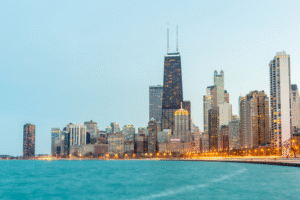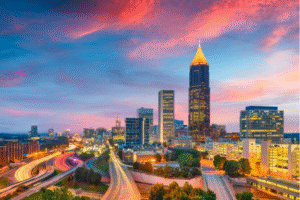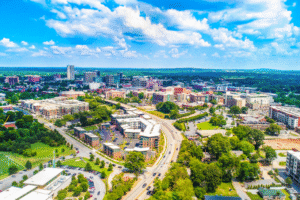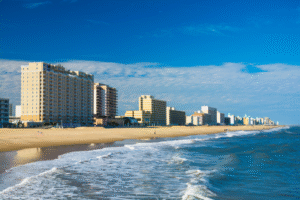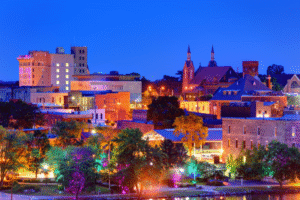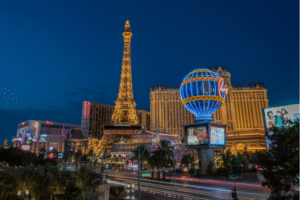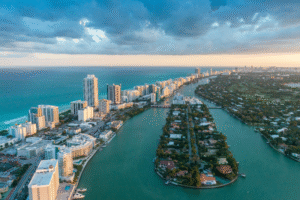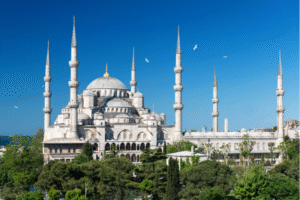In the heart of the Jordanian desert lies one of the world’s most mesmerizing archaeological sites: Petra, the ancient rose-red city carved directly into rock. Once the thriving capital of the Nabataean kingdom, Petra is a timeless blend of human ingenuity and natural beauty. With its towering canyons, hidden tombs, and legendary facades, Petra invites travelers into a world where history, mythology, and mystery collide.
Whether you’re hiking through the dramatic Siq or standing in awe before the Treasury, Petra is a journey back through millennia. Here’s how to experience its wonders over two unforgettable days.
Day 1: Entering the Lost City
Morning: The Siq and The Treasury
Start early—Petra opens around 6 a.m., and the morning light reveals the rose-colored cliffs at their most magical. After passing through the visitor center and ticket gate, begin your journey through the Siq, a narrow, winding gorge flanked by towering rock walls.
The Siq itself is a marvel, with ancient carvings, water channels, and Nabataean engineering everywhere you look. After nearly a kilometer of walking, the passageway suddenly opens—and there it is: Al-Khazneh, or the Treasury.
Carved from sandstone with astonishing precision, the Treasury is Petra’s most iconic monument. While originally believed to hold treasure, it was actually a royal tomb. Take your time here—walk around, sit, and just absorb it.
Late Morning: The Street of Facades and the Theater
Continue into the heart of Petra. The Street of Facades is lined with towering tombs and carvings that show off Nabataean architectural skill. Nearby, the Roman-style theater is carved into rock and could once hold around 4,000 spectators.
Climb into the theater’s upper tiers for views of Petra’s sprawling valley—you’ll begin to appreciate how vast the city once was.
Lunch: Basin Restaurant or Picnic
Stop for lunch at the Basin Restaurant, managed by local Bedouins. It offers a buffet with Jordanian specialties like mansaf, grilled lamb, and fresh pita. Alternatively, bring your own lunch and eat in a shady spot by the Royal Tombs.
Afternoon: The Royal Tombs and the Colonnaded Street
Explore the Urn Tomb, Silk Tomb, Corinthian Tomb, and Palace Tomb—each with unique colors and designs. Then head to the Colonnaded Street, which was once Petra’s main commercial thoroughfare during Roman times. You’ll see remnants of shops, temples, and public baths.
Don’t miss the Great Temple Complex—a partially restored site where you can sit on the steps and imagine life in ancient Petra.
Evening: Petra by Night (Optional)
If you’re visiting on a Monday, Wednesday, or Thursday, stick around for Petra by Night—a magical candlelit walk through the Siq to the Treasury, accompanied by traditional Bedouin music and storytelling. It’s touristy, yes, but utterly enchanting.
Day 2: The Monastery and High Places
Early Morning: The Monastery (Ad-Deir)
Start early again, especially if you’re visiting in the warmer months. The hike to the Monastery involves 800 steps up the mountainside, but the climb is worth every bead of sweat.
Ad-Deir is even bigger than the Treasury, and just as impressive—less ornate, but more massive and serene. There are a few cafés at the top where you can enjoy tea or fresh juice with stunning views of the surrounding desert and cliffs.
Tip: Bring water and wear good hiking shoes. The path is steep and uneven in places.
Late Morning: High Place of Sacrifice
After descending, consider another hike—this time to the High Place of Sacrifice. The trail starts behind the theater and leads to a mountaintop altar with panoramic views and sacred carvings.
Along the way, you’ll pass ancient obelisks, rock-cut staircases, and hidden tombs. At the summit, you’ll be rewarded with one of Petra’s best views, and the quiet atmosphere is perfect for reflection.
Lunch: Bedouin Tent or Back at the Visitor Center
Many locals set up small tent cafés near the Monastery and High Place. Enjoy a light lunch of falafel, labneh, or shakshuka in the shade.
Alternatively, head back to the visitor center area for a more relaxed sit-down meal.
Afternoon: Time to Wander and Reflect
If you still have energy, revisit your favorite sites—Petra always offers something new when seen from a different angle or under different light.
You might:
- Climb up to the Byzantine Church and view its mosaics.
- Revisit the Royal Tombs to catch the afternoon glow on the stone.
- Spend time browsing Bedouin handicrafts, especially silver jewelry, woven rugs, and frankincense.
Where to Stay
Wadi Musa, the town just outside Petra, offers accommodations for all budgets:
- Luxury: Mövenpick Resort Petra – Just steps from the entrance, with ornate décor and rooftop views.
- Mid-range: Petra Guest House – Built into a rock face and very convenient.
- Budget: Rocky Mountain Hotel – Friendly, simple, and offers shuttle service.
For a more immersive experience, consider staying in a Bedouin camp just outside Petra, such as Seven Wonders Bedouin Camp or Little Petra Bedouin Camp.
Tips for Visiting Petra
- Best Time to Visit: Spring (March–May) and Fall (September–November) offer the best weather.
- Tickets: Jordan Pass includes Petra entry and waives visa fees—ideal for travelers spending more than 3 nights in Jordan.
- Clothing: Modest, breathable clothes. A hat and sunscreen are essential.
- Guides: Hiring a licensed guide at the gate can enrich your experience immensely.
- Hydration: Bring at least 2 liters of water per person. Vendors inside sell water, but it’s pricey.
- Respect: Avoid climbing on fragile tombs or structures. Petra is a UNESCO World Heritage Site and needs protection.
A Journey Through Time
Petra isn’t just a destination—it’s a pilgrimage into the soul of history. As you walk the same paths once tread by Nabataean traders and Roman legions, you’ll feel the whispers of ancient life echoing from the canyon walls. Every step, every stone, tells a story.
It’s a place that doesn’t just live in memory—it etches itself into your imagination.




